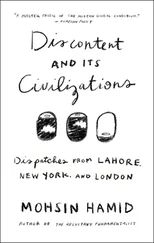The Argument of this Book
Money Talk is fearful – fearful of commodification, of the predominance of market relations, of the progressive tendency of the financial values of the market to overwhelm all other values that human beings hold dear. The central question that this book attempts to answer is: can commodification be resisted? The overall approach that I shall take owes a great deal more to the sociology of knowledge than it does to economic sociology, which is the framework most commonly employed in studies of commodification. Thus, I give a central place to the development of a moral climate – an ideology – which is, ironically perhaps, a more systematic manifestation of the Money Talk introduced in this chapter.
The basis for resistance is the regulation of markets in the name of moral principles deemed to be superior to any gains, moral or otherwise, that might accrue from market activity. That regulation is a form of moral regulation. It does not apply to all commodities but it does to those that concern objects or services defined as special – or sacred. Regulation typically, but not invariably, takes the form of control over property rights in those objects. That is possible without totally depriving any owner of his or her property because property is actually a bundle of rights – not a single right – and regulation operates by controlling some of those rights and not others.
Moral regulation of this kind becomes possible if a moral climate – an ideology – develops that stimulates that intervention. In turn, that ideology is the product of a well-connected intellectual stratum that addresses a receptive audience whose members are in a good position to give substance to the moral beliefs involved. Because of the scale needed to implement market interventions, the state is the agency best placed. But one should not ignore the importance of the diffusion of the moral climate in civil society as well. Moral regulation operates at different levels. In institutional form, it operates in charitable organizations that not only act charitably but also convey a moral force. Campaigning organizations or those that aim to provide a mutual benefit are also examples of institutions that effectively contribute to moral regulation. But, at the other end of the spectrum of institutionalization, a moral climate pervades everyday life and moral regulation takes the form of shame, gossip or disapproval. As to content, the critical element of the moral climate which results in moral regulation is an emphasis on the collective interest as opposed to a sectoral or individual interest. That emphasis embodies a long-term commitment as opposed to the short-term concentration on individual or sectoral interest.
The argument of the book therefore turns on the notion of moral climate. Empirically, the account of resistance to commodification is applied to the UK in the Long Century between the middle of the nineteenth century and the last quarter of the twentieth. In that period, an intellectual stratum formed a view of society as dominated by an unrestrained market with profound – and immoral and dangerous – consequences for society as a whole. The ideology it developed was actually an uneasy combination of elements emphasizing social justice with those that stressed the importance of social order, all roughly stitched together by the stress on the collective interest. The ideology of Money Talk was, of course, not uncontested during the Long Century and by the 1970s it had been replaced by a radically different ideology – Coined Liberty – that stressed the importance of individual freedom and the defects of a society organized around the collective interest.
The moral climate of Money Talk is pervasive and I illustrate its influence by three case studies, each of which shows how a disposition , a set of cultural conventions, forms a moral framework for economic activity in different markets. The case studies draw on the history of the UK in the Long Century. That focus on a single society is not as powerful as a cross-national study might be in developing a theory of resistance. However, it does permit a much more detailed empirical investigation of how a moral climate has an impact on market regulation.
The three case studies form part Iof the book. In part II, chapter 5describes the principal elements of market institutions that must be controlled in order to block market activity, concentrating on the attribution of property rights and the construction of objects entering a market as properly tradable by defining them as sacred or not. Chapter 6gives an account of that control as moral regulation, which is exercised at different levels, from the more formal by the state to the less so by such means as shame and gossip. Moral regulation of this kind is made possible by the generation of a distinctive moral climate which combines an impulse to social order with an insistence on social justice, and which relates to the dispositions of economic practices such as those described in part I. In chapter 7, the origin and maintenance of Money Talk are explained by the activities of a cadre of intellectuals interacting with a particular audience. Resistance to commodification in the Long Century was not wholly successful, however, and in the final chapter I attempt an account of why both commodification and its resistance are necessarily incomplete social processes producing a society with a great deal of moral complexity. All societies must pay attention both to long-term stability and to the short-term generation of resources, and the outcome may well be an oscillation in the dominance of the ideological formations that create and maintain those outcomes.
Part I Case Studies
Land is special. Most fundamentally, perhaps, it excites emotional commitment. Much of the spirit of nationalism is based on the conviction that a particular territory gives an identity that is celebrated in rituals of various kinds as well as in popular culture. The notion of home is a place where one is safe, whether that is a building, a locality or a nation, perhaps because of the protection given by other people (Linklater, 2015). Religions have sacred spaces – churches, mosques, stone circles, groves of trees or tracts of land – which inspire feelings of awe, of devotion and of a kind of power. And secular spaces can also celebrate what Emile Durkheim thought of as the collective impulse of sacredness, whether they are football stadia, rock concert venues or roadside memorials. Places – religious or not – that carry this emotional charge prove resistant to being treated as commodities like any other. The earliest known lawsuit in Britain, in the year 118, concerned the sale of a woodland sacred to the ancient Britons (Jessel, 2011). Ever since then, the private ownership of land and its purchase and sale, particularly common land, have been hotly contested, but not, it should be said, particularly successfully (Linklater, 2015). In contemporary Britain, the countryside has legal protections and national parks are revered. A study (Rose et al., 1982) found that farmers in Britain, operating in a capitalist market, also manifest a commitment to the land, to its stewardship, and to farming as a practice that is bound up with their ownership of land but is not impersonal. Karl Polanyi puts the point in referring to land as a ‘fictitious commodity’. He argues that: ‘The economic function is but one of the many vital functions of land. It invests man’s life with stability; it is the site of his habitation; it is a condition of his physical safety; it is the landscape and the seasons. We might as well imagine his being born without hands and feet as carrying on his life without land’ (Polanyi, 2001: 187).
Читать дальше












